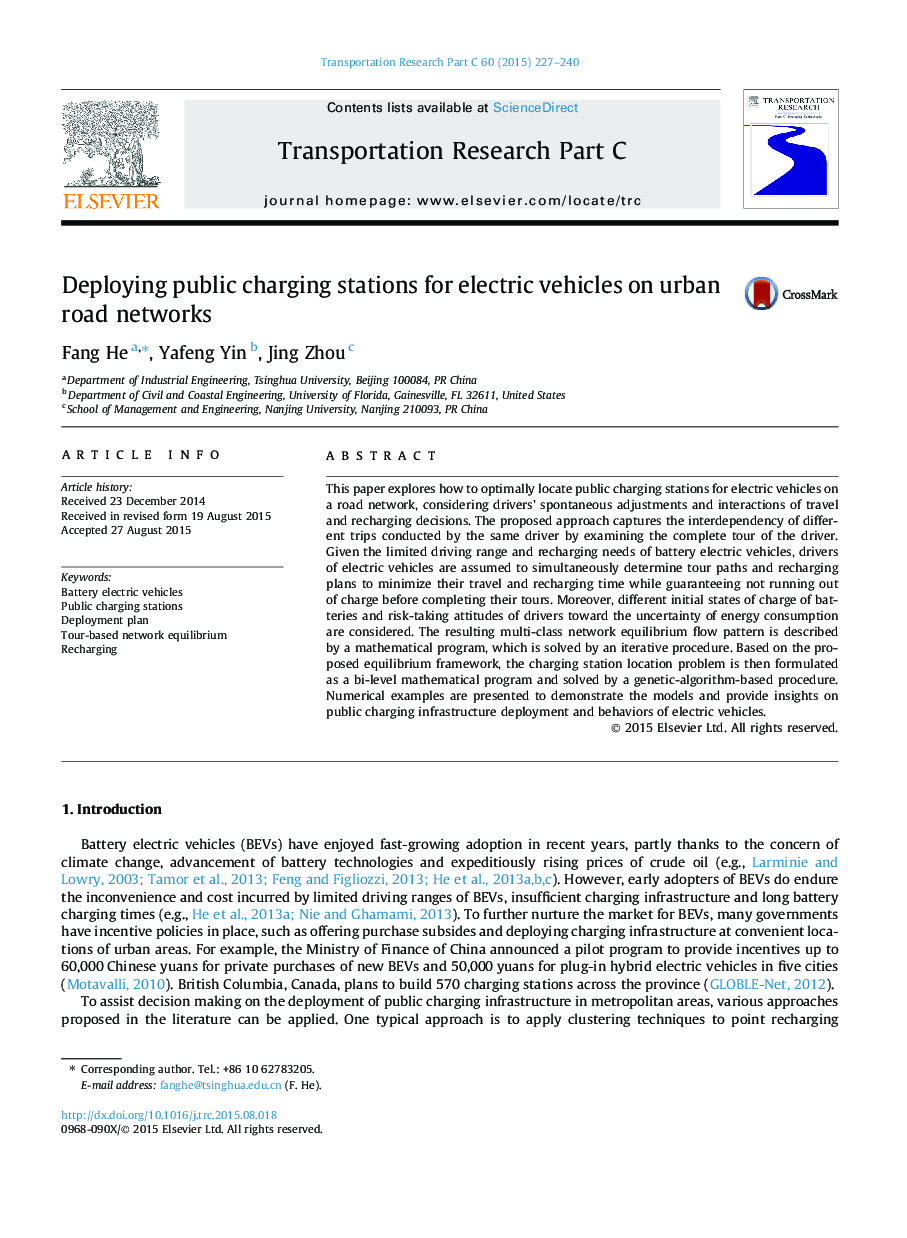| Article ID | Journal | Published Year | Pages | File Type |
|---|---|---|---|---|
| 6936600 | Transportation Research Part C: Emerging Technologies | 2015 | 14 Pages |
Abstract
This paper explores how to optimally locate public charging stations for electric vehicles on a road network, considering drivers' spontaneous adjustments and interactions of travel and recharging decisions. The proposed approach captures the interdependency of different trips conducted by the same driver by examining the complete tour of the driver. Given the limited driving range and recharging needs of battery electric vehicles, drivers of electric vehicles are assumed to simultaneously determine tour paths and recharging plans to minimize their travel and recharging time while guaranteeing not running out of charge before completing their tours. Moreover, different initial states of charge of batteries and risk-taking attitudes of drivers toward the uncertainty of energy consumption are considered. The resulting multi-class network equilibrium flow pattern is described by a mathematical program, which is solved by an iterative procedure. Based on the proposed equilibrium framework, the charging station location problem is then formulated as a bi-level mathematical program and solved by a genetic-algorithm-based procedure. Numerical examples are presented to demonstrate the models and provide insights on public charging infrastructure deployment and behaviors of electric vehicles.
Related Topics
Physical Sciences and Engineering
Computer Science
Computer Science Applications
Authors
Fang He, Yafeng Yin, Jing Zhou,
